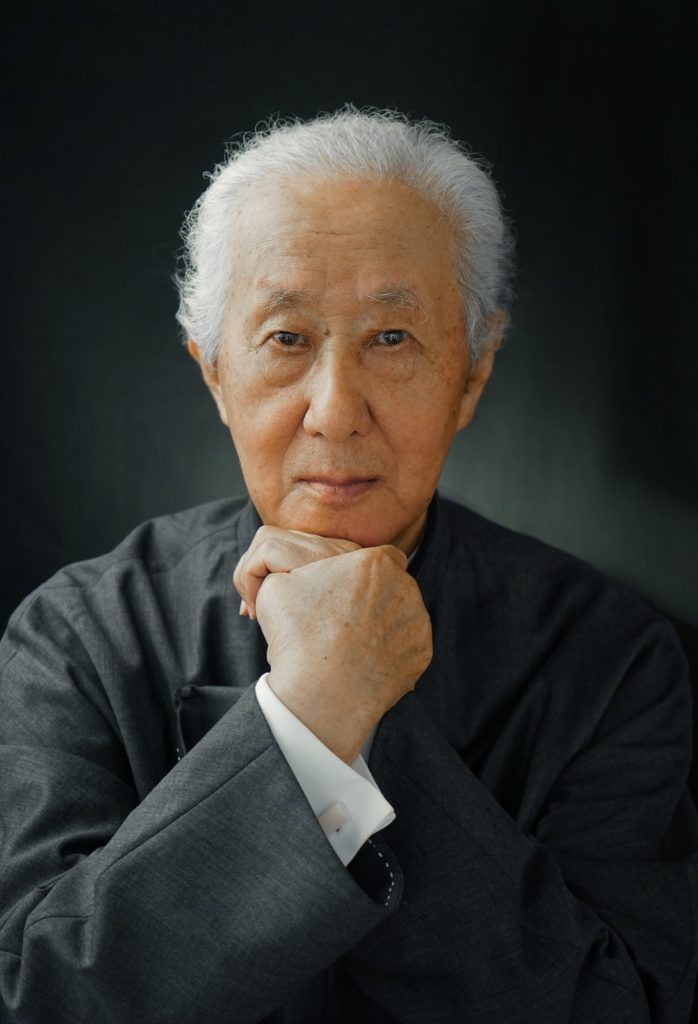People
Japanese Architect Arata Isozaki, Whose Elegant Geometric Designs Became Icons of Postmodernism, Wins the 2019 Pritzker Prize
The bombing of Hiroshima and Nagasaki had a profound influence on his work.

The bombing of Hiroshima and Nagasaki had a profound influence on his work.

Eileen Kinsella

Arata Isozaki, a city planner, architect, and theorist, is the winner of this year’s Pritzker Prize, the annual award regarded as the Nobel Prize for architecture. The 87-year-old, who designed the Museum of Contemporary Art, Los Angeles, and the China Central Academy of Fine Arts Art Museum in Beijing, is revered for his ability to blend the modern and postmodern. He has played a major role in spreading the influence of Japanese architecture and design worldwide.
The prize comes with $100,000, a bronze medallion, and, of course, the right to preface one’s name with the phrase “Pritzker Prize winner” for the rest of time. Many consider the honor to be overdue for Isozaki.
The architect was born in Ōita, on the island of Kyushu in Japan, in 1931, and was indelibly shaped by World War II. He was 14 years old when Hiroshima and Nagasaki were bombed. “When I was old enough to begin an understanding of the world, my hometown was burned down,” he recounted in a statement. “Across the shore, the atomic bomb was dropped on Hiroshima, so I grew up near ground zero. It was in complete ruins, and there was no architecture, no buildings, and not even a city. Only barracks and shelters surrounded me. So, my first experience of architecture was the void of architecture, and I began to consider how people might rebuild their homes and cities.”
The experience helped form his approach to design: even though buildings are transitory, he has said, they should please the senses of both visitors and passerby. In 2013, he teamed up with artist Anish Kapoor to build Ark Nova, an inflatable, 500-seat mobile concert hall that toured regions affected by the 2011 earthquake and tsunami in Japan.
Isozaki studied architecture at the University of Tokyo and then joined the practice of architect Kenzo Tange, who would go on to win the Pritzker Prize in 1987. As Isozaki refined his aesthetic, combining simple geometric shapes to maximum effect, he set up his own practice in the 1960s. He began to make a name for himself internationally by bridging the styles of East and West. He “created buildings of great quality that to this day defy categorizations, reflect his constant evolution, and are always fresh in their approach,” according to a statement from the Pritzker Prize jury.
Among Isozaki’s best-known designs are those for the Qatar National Convention Center in Doha, the Shanghai Symphony Hall in China, the Palau Sant Jordi in Barcelona, and the Nara Centennial Hall in Nara, Japan. In the 1980s, the Museum of Contemporary Art, Los Angeles, became his first international commission.
Isozaki is the eighth Japanese architect to win the Pritzker Prize. The award ceremony will take place at the Chateau de Versailles in May.
“[H]e never merely replicated the status quo,” the Pritzker jury said in a statement, “but his search for meaningful architecture was reflected in his buildings that to this day, defy stylistic categorizations, are constantly evolving, and always fresh in their approach.”